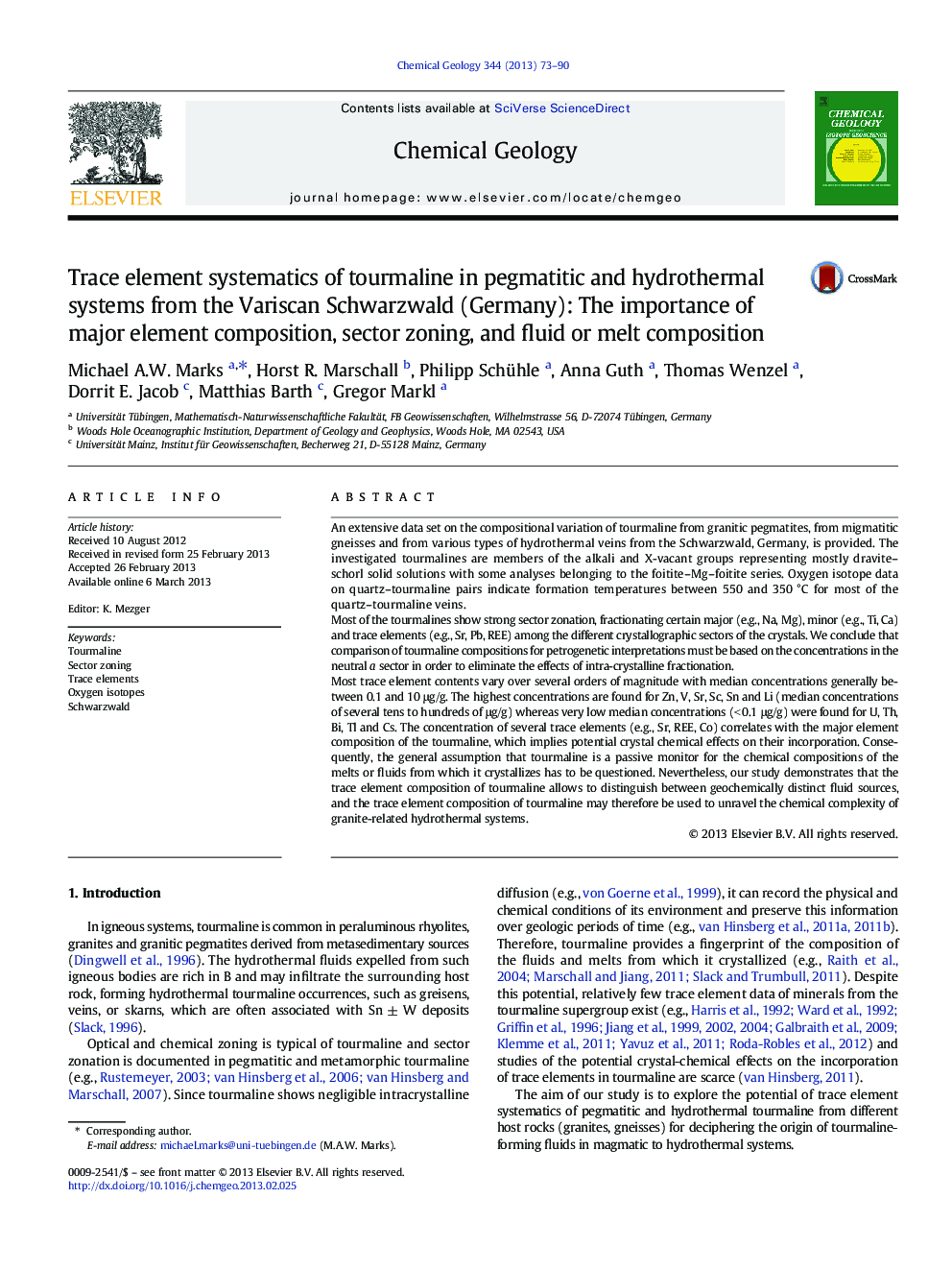| کد مقاله | کد نشریه | سال انتشار | مقاله انگلیسی | نسخه تمام متن |
|---|---|---|---|---|
| 4699034 | 1637624 | 2013 | 18 صفحه PDF | دانلود رایگان |

• Major, minor and trace element data for tourmaline from the Schwarzwald (Germany)
• Sector zoning fractionates certain major, minor and trace elements between sectors.
• Incorporation of some trace elements depends on major-element composition.
An extensive data set on the compositional variation of tourmaline from granitic pegmatites, from migmatitic gneisses and from various types of hydrothermal veins from the Schwarzwald, Germany, is provided. The investigated tourmalines are members of the alkali and X-vacant groups representing mostly dravite–schorl solid solutions with some analyses belonging to the foitite–Mg–foitite series. Oxygen isotope data on quartz–tourmaline pairs indicate formation temperatures between 550 and 350 °C for most of the quartz–tourmaline veins.Most of the tourmalines show strong sector zonation, fractionating certain major (e.g., Na, Mg), minor (e.g., Ti, Ca) and trace elements (e.g., Sr, Pb, REE) among the different crystallographic sectors of the crystals. We conclude that comparison of tourmaline compositions for petrogenetic interpretations must be based on the concentrations in the neutral a sector in order to eliminate the effects of intra-crystalline fractionation.Most trace element contents vary over several orders of magnitude with median concentrations generally between 0.1 and 10 μg/g. The highest concentrations are found for Zn, V, Sr, Sc, Sn and Li (median concentrations of several tens to hundreds of μg/g) whereas very low median concentrations (< 0.1 μg/g) were found for U, Th, Bi, Tl and Cs. The concentration of several trace elements (e.g., Sr, REE, Co) correlates with the major element composition of the tourmaline, which implies potential crystal chemical effects on their incorporation. Consequently, the general assumption that tourmaline is a passive monitor for the chemical compositions of the melts or fluids from which it crystallizes has to be questioned. Nevertheless, our study demonstrates that the trace element composition of tourmaline allows to distinguish between geochemically distinct fluid sources, and the trace element composition of tourmaline may therefore be used to unravel the chemical complexity of granite-related hydrothermal systems.
Journal: Chemical Geology - Volume 344, 19 April 2013, Pages 73–90